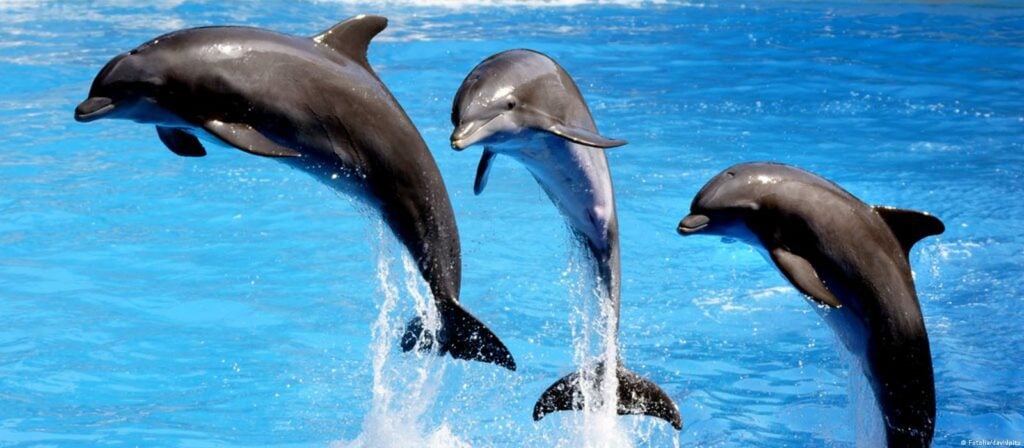A dolphin is an aquatic animal that belongs to the suborder Cetacea. The dolphin families include Delphinidae, Platanistidae, Iniidae, Pontoporiidae, and the extinct Lipotidae. There are 40 existing dolphin species today. But did you know that dolphins had a unique way of identifying members of their pod?
Dolphins have names for one another and use a distinct whistle to distinguish between various pod members.
Dolphin’s Ability to Communicate
Dolphins are very social creatures, and one of the most remarkable aspects of dolphins is their ability to communicate with other dolphins. They communicate using three methods: echolocation, squeaks, and social communication. Dolphins also find communication ways, such as slapping the water with their tails, whistles, and clicking. (Source: Atolea Jewelry)
What Kind of Noises Do Dolphins Make?
Dolphins produce two types of noises: whistles and clicks. Clicks are employed for echolocation, while whistles are utilized to communicate with other members of their species and, most possibly, with other species. It is also believed that each dolphin has a distinct whistle, known as a signature whistle, used to identify an individual. (Source: UK Whales)
Where Do Dolphins Live?
Almost all dolphin species live in various aquatic settings, from coastal beaches to estuaries to oceans to freshwater. They can also flourish in temperatures ranging from 0°C to 30°C.
Bottlenose dolphins are found throughout the United Kingdom, particularly in Eastern Scotland and West Wales. Furthermore, Scotland is home to the world’s northernmost pod of bottlenose dolphins. (Source: Atolea Jewelry)
Human-Like Nature
Dolphins, like humans, give birth to their children. The infant dolphin’s tail, however, comes first, unlike ours. Dolphins have gestation periods ranging from 9 to 17 months, depending on the species. They are quite the mother once they have given birth since they assist their young in breathing out on the surface.
According to researchers, mother dolphins are likewise attentive mothers who frequently observe mother dolphins hugging and snuggling their young ones. (Source: Atolea Jewelry)
Extraordinary Senses
Although dolphins lack a sense of smell, they compensate greatly with their other senses. They have a unique sense of sight in and out of the water. Dolphins have a keen sense of touch.
Their hearing abilities are astounding since they can hear frequencies ten times higher than humans. Dolphins employ echolocation, which uses echoes and sound waves to help them pinpoint places and locate items out of reach. (Source: Atolea Jewelry)
Warm-Blooded Dolphins
Dolphins use their skin temperature to maintain their body temperature. So they can stay warm even if the water is too chilly. Some bodies of water, particularly those near the Northern Pacific Ocean, can be dangerously cold. Being a warm-blooded mammal gives them a significant edge in terms of survival.
One advantage of being a warm-blooded animal is that you are less susceptible to infections and other health problems that most animals experience when exposed to severely cold temperatures. (Source: Atolea Jewelry)
Are Dolphins Mammals?
While swimming like a fish and gliding over the deep depths, Dolphins are not fish. Dolphins, like whales, manatees, and seals, are mammals. What distinguishes dolphins from mammals? They don’t have gills. Instead, they breathe through their lungs. As previously said, they have live offspring and primarily generate milk to feed their young.
Another factor that causes dolphin mammals to have hair and be warm-blooded. As previously stated, they can maintain their body temperatures even in icy environments. (Source: Atolea Jewelry)
Image from Dw.Com
